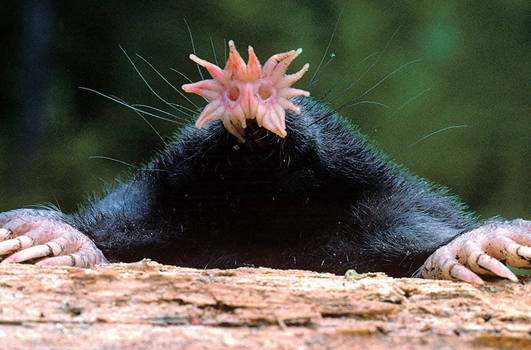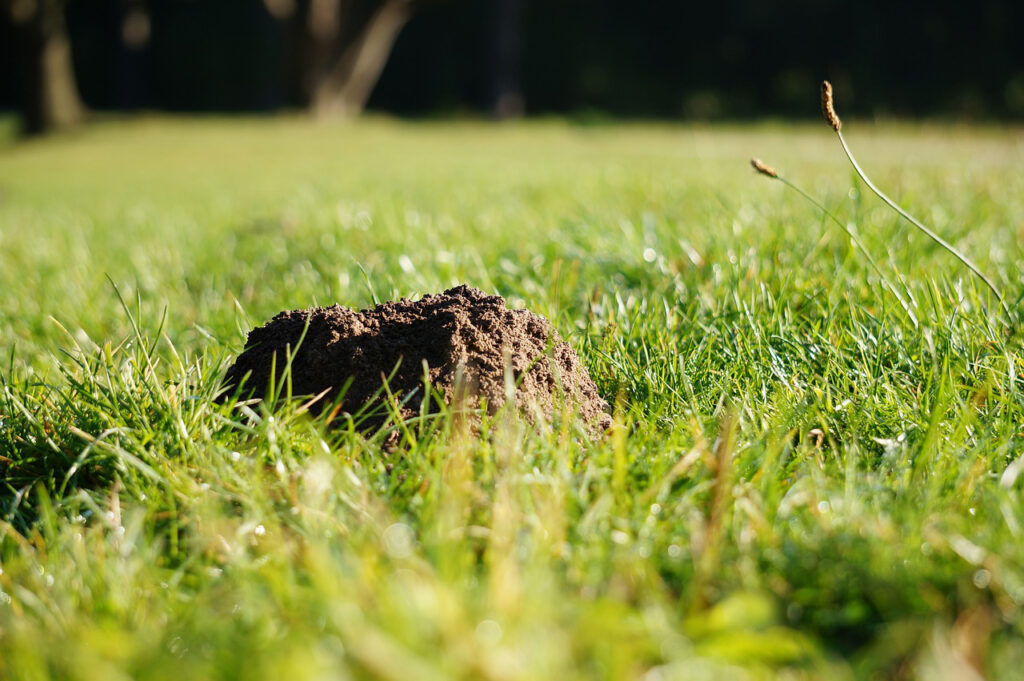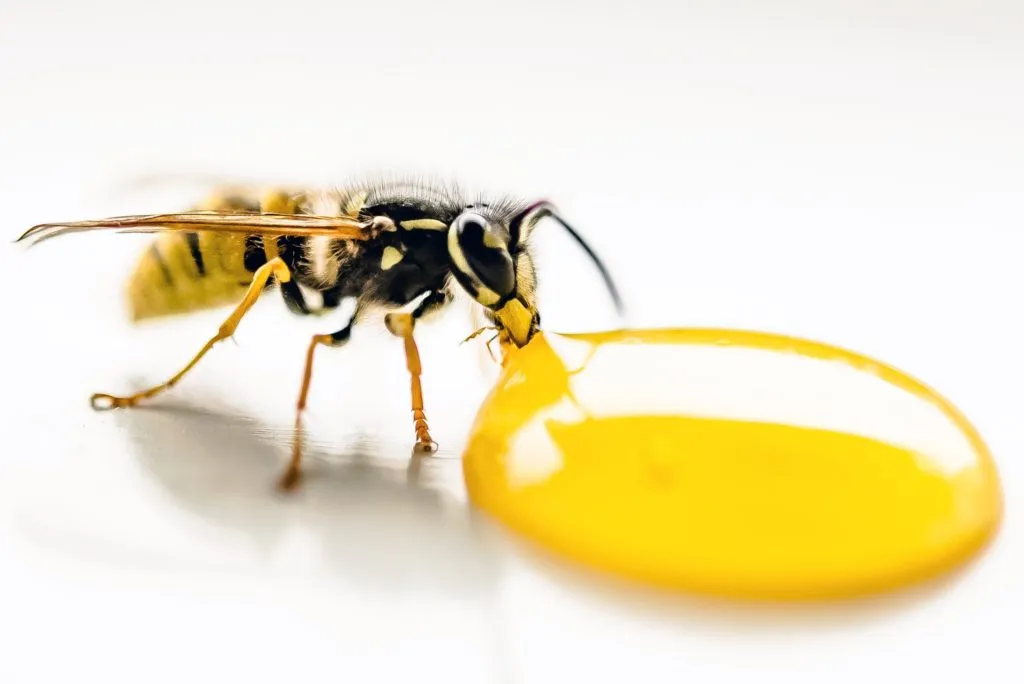
Stinging Insects
December 5, 2024Dominion offers a solution for all types of stinging and non-stinging bees, wasps, hornets and yellow jackets. Each type of stinging and non-stinging insect have different methods of control. Call us for help on identification and solutions to get rid of the nuisance. You may also email our support team at Info@dominionpestcontrol.com with a picture of your pest for identification or for general inquiry.
We treat for all ground dwelling, and wood destroying bees as well. Some of the most common stinging and non-stinging insect in Lancaster and York PA include the Yellow Jacket, European Hornet, Paper Wasps, Cicada Killers, and Carpenter Bees. Call our office for more information or to schedule an appointment at 717-393-7879.
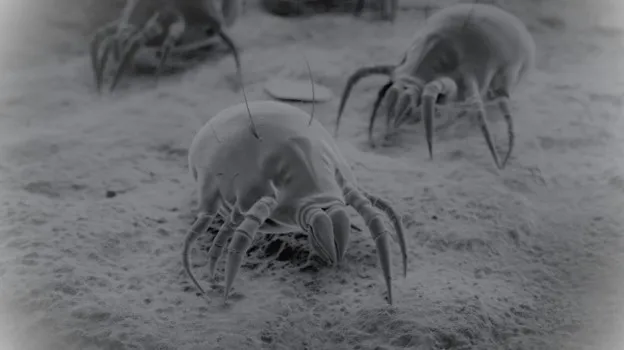
Effective Mite Control Services in Pennsylvania
December 5, 2024Welcome to Dominion Pest Control, your trusted partner in effective mite management. Serving Lancaster, York, Dauphin, Berks, Chester, Cumberland, and Lebanon counties, we specialize in providing comprehensive and reliable pest control solutions tailored to meet the needs of homeowners, landlords, and property managers. To get rid of mites, we recommend proper inspection, plus custom treatment solutions, followed by preventive measures.
What Are Mites?
Mites are tiny arachnids, closely related to ticks, with eight jointed legs. Due to their minuscule size, they are often invisible to the naked eye. Mites are incredibly diverse, with thousands of species that inhabit a wide range of environments, from forests and grasslands to homes and agricultural areas. While many species are beneficial, such as by breaking down organic matter or serving as food for other creatures, certain types can cause significant problems, especially when they infest homes, gardens, and farmlands.
In rural areas of Pennsylvania, some mites pose challenges to agriculture. One such example is grain mites, which thrive in bulk grain storage facilities. These mites are a common issue in farming communities where grain is stored for later use or sale. Grain mites can trigger allergic reactions in humans, particularly those working in storage facilities or handling grain, and they can also cause health problems for livestock that ingest contaminated feed. In addition, grain mites can damage stored grains, leading to contamination and reduced quality, which can result in financial losses for farmers and food processors.
In these rural settings, controlling mite infestations requires understanding their life cycles and environmental preferences. By implementing effective pest management strategies, such as maintaining proper grain storage conditions and using mite-control products, when necessary, farmers can protect both their crops and the health of the people and animals in their communities.
Types of Mites We Handle
- Clover Mites: These tiny, reddish-brown arachnids are often found on lawns and in gardens, where they feed on grass and plants. During warm spells, particularly in winter and early spring in Pennsylvania, clover mites can invade homes in large numbers, seeking shelter and warmth. While they do not pose a threat to humans or pets, their presence can be a nuisance, especially when they gather around windows and doors. At Dominion Pest Control, we offer comprehensive clover mite control services to keep these pests at bay.
- Spider Mites: As their name suggests, spider mites are closely related to spiders and can spin webs. These tiny critters are common garden pests that feed on plant sap, causing leaves to turn yellow or brown and reducing plant vigor. Spider mites are especially prevalent in hot and dry conditions, making them a common problem for Pennsylvania homeowners during the summer months. Our team of experts has the knowledge and tools necessary to effectively manage spider mite infestations and protect your plants.
- Grain Mites: Common in bulk grain storage, these mites can cause allergic reactions in humans and harm livestock. In Pennsylvania, they are often found in agricultural settings and storage facilities where grain is kept, posing a pest control issue for farms and food storage operations.
How to Get Rid of Mites: Our Comprehensive Treatment Plans
1. Inspection
Our experts perform comprehensive inspections to accurately assess the type and extent of mite infestations. This critical step lays the foundation for crafting an effective, targeted treatment plan.
2. Custom Treatment Solutions
At Dominion Pest Control, we recognize that every infestation is unique. Our team tailors treatment plans to address the specific mite issues affecting your property, whether it’s grain mites indoors or spider mites in your garden. Utilizing cutting-edge technology alongside proven methods, we ensure efficient removal and prevention of mites, always focusing on your needs.
3. Preventive Measures:
To avert future mite infestations, we provide guidance on creating less favorable environments for mites. This includes advice on humidity control, regular cleaning, and maintaining plant health to deter garden mites.
- Follow-Up Visits:
- Depending on the infestation’s severity, follow-up visits might be necessary to guarantee the complete elimination of mites. We offer flexible scheduling to meet your needs effectively.
Choosing Dominion Pest Control means selecting comprehensive, client-focused solutions that prioritize your safety and comfort, so your property remains a mite-deterrent site. Whether for residential or commercial needs, our dedicated team provides exceptional service tailored specifically to Pennsylvania residents and businesses in Lancaster, York, Berks, Lebanon, Chester, Cumberland, and Dauphin counties.
What is the Life Cycle of Mites
Understanding the life cycle of different mite species is essential to effectively manage and control infestations.
Clover mites undergo four life stages: egg, larva, nymph, and adult, with eggs typically laid in protected crevices on a property and hatching when temperatures are favorable.
Spider mites similarly have a life cycle that includes egg, larva, nymph, and adult stages, with eggs deposited on plant surfaces and hatching under warm, dry conditions.
Grain mites also pass through four stages – egg, larva, nymph, and adult – thriving in environments with high moisture content, such as improperly stored grain.
Recognizing these life cycles allows for targeting interventions at critical points to effectively disrupt and manage their populations.
Tips for Preventing Mite Infestations
Maintain Cleanliness and Reduce Clutter:
Keeping your home or property clean and clutter-free is crucial in preventing mite infestations.
Customized Solutions:
We understand that every mite problem is unique, so we design treatment plans specifically tailored to address the particular mite issue you’re facing, whether it’s grain mites, spider mites, or clover mites. This ensures not only effective elimination of mites but also helps in preventing future infestations. Our experts assess the situation and provide recommendations that best suit your environment.
Eco-Friendly Treatments for All Types of Mites
At Dominion Pest Control, we are committed to using environmentally friendly products for treating not only clover mites, but also spider mites, and grain mites. By employing eco-conscious treatments, we provide effective pest control while minimizing harm to the ecosystem.
For clover mites, our experts apply safe, non-toxic solutions that discourage their presence without damaging your plants or lawns.
In addressing spider mite populations, particularly in gardens, we utilize biopesticides that help maintain plant health.
For grain mites, we rely on chemical-free solutions that safeguard your stored food products and agricultural goods.
Our holistic approach guarantees comprehensive mite control that prioritizes well-being and environmental sustainability.
Join Our Community of Satisfied Customers
Don’t just take our word for it. See why homeowners, landlords, and property managers trust Dominion Pest Control for safe and effective mite management. Ready to enjoy a mite-free environment? Contact us today to schedule your inspection or learn more about our team of local pest control professionals.
Call us today at (717) 393-7879 or contact us here to learn about our pest control services.
We serve Lancaster County (Lititz, Lancaster city, Manheim, Ephrata, Strasburg, etc), York County (Dallastown, Red Lion, York city, Hellam, etc), Berks County, Chester County, Cumberland County, Lebanon, and Dauphin County (Hershey). Here’s a map of our location and service area:
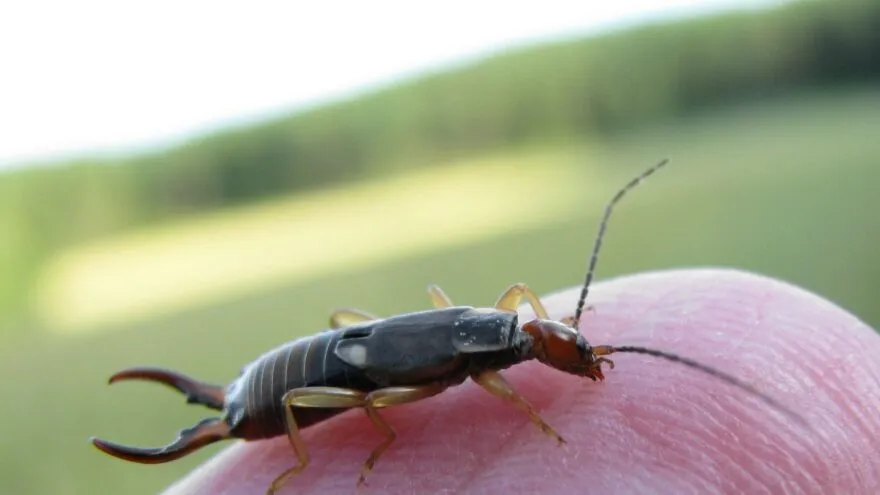
Banish Pincher Bugs: A Complete Guide to Get Rid of Earwigs from Your Home
December 5, 2024Earwigs, known for their intimidating pincers, are creepy insects that most homeowners wish to avoid. While earwig bugs often get a bad rap due to myths and their frightening appearance, they are more of a nuisance than a threat. If you spot earwigs in your home, garden, or both, fear not. This guide provides everything you need to know about identifying earwigs, understanding their habits, and most importantly, explains how to get rid of earwigs effectively.
Get Rid of Earwigs in the House
If you’ve noticed these mandible-flashing critters around your home, you’re not alone. Earwigs often seek refuge inside houses. Particularly during the warmer months or when it’s damp outside, insects and other pests may come indoors seeking shelter. Even though they prefer dampness, excessive moisture outside can drive them indoors to escape heavy rain, find food, or locate more stable humidity levels. Indoors, they can find consistent conditions and protection from the elements. They love hiding in dark, moist areas like basements, bathrooms, and kitchens. To combat them, the first step is to eliminate the conditions they thrive in.
Begin with reducing indoor moisture levels. Fix any leaky faucets or pipes promptly and ensure proper ventilation in high-humidity areas. Dehumidifiers can be particularly useful in basements and other damp zones.
Another effective strategy is to seal entry points around windows, doors, and foundations. Make sure door sweeps and weather strips are intact and consider using silicone caulk to fill any gaps.
Regular housekeeping, including vacuuming, dusting, and decluttering, will also deter earwigs by removing their potential hiding spots and food sources.
For immediate relief, use sticky traps or sprinkle diatomaceous earth (DE) in areas outdoors where earwigs are prevalent. These methods are non-toxic and can significantly reduce their numbers. However, for a more extensive infestation, seek professional pest control. Contact us to learn about our pest control services.
What Do Earwigs Eat?
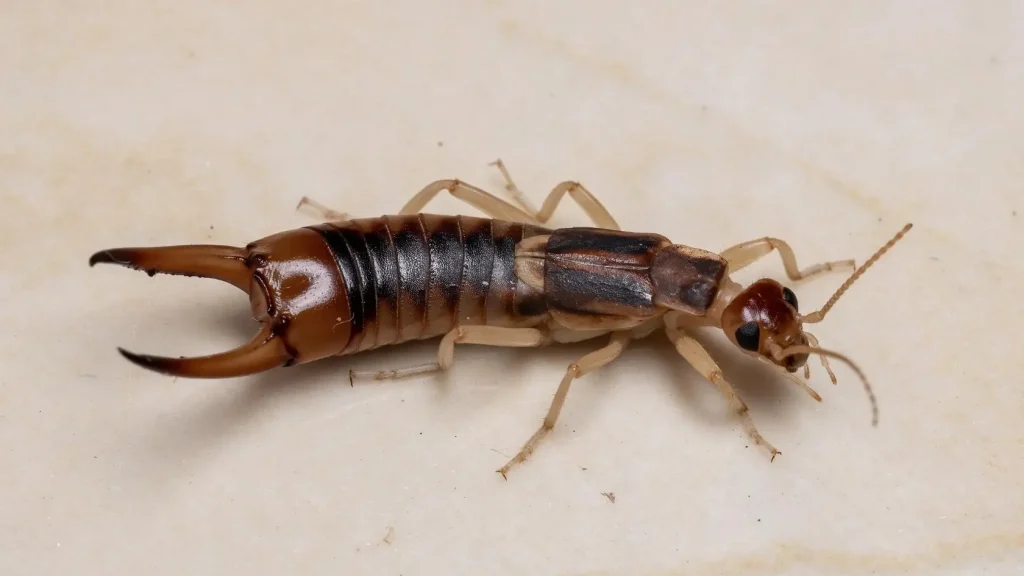
Earwigs are omnivorous creatures with a varied diet, which includes both plant and animal matter. They are known to munch on leaves, flowers, fruits, and vegetables, which can make them frequent visitors to your garden. At the same time, they also consume decaying organic matter, insects, and small arthropods.
Their dietary habits mean they play a role in the ecosystem, helping break down decaying matter and controlling other insect populations. However, when earwig populations grow too large, they may start damaging ornamental plants like dahlias, marigolds, and roses, as well as crops like lettuce and strawberries, leading to the need for effective pest control.
Understanding their diet helps in managing their presence and implementing strategies to relocate them away from gardens and homes. Providing alternate food sources like compost piles can divert them from specific areas you wish to protect. However, make sure your compost pile is placed at least 50 feet away from these areas.
Why Do They Call Pincer Bugs Earwigs?
The name “earwig” has intrigued many, often leading to disgusting tales about these insects crawling into people’s ears. The term is actually derived from the Old English words “ēare,” meaning ear, and “wicga,” meaning insect. It was a folklore belief, rather than reality, that earwigs would burrow into ears and then into human brains.
This misconception has been perpetuated over centuries, even appearing in literature. Despite the myths, earwigs are no more likely to crawl into your ears than any other bug. They are simply drawn to warm and humid environments, which may occasionally lead them near sleeping humans.
Are They Harmful to People and Pets?
Earwigs look menacing with their prominent pincers, but they pose little threat to humans and pets. While they can use their pincers as a defense mechanism, the pinch is typically mild and not harmful. Often, an earwig will try to retreat rather than confront a threat.
Pet owners can rest easily, as earwigs are not poisonous and pose no significant risk to dogs or cats. Of course, keeping curious pets from playing with or eating them is advisable to avoid any minor discomfort or irritation.
While they might look intimidating, they are less of a threat and more a target for routine pest control.
Do Earwigs Have an Odor?
Though earwigs are generally not associated with any smell, they can emit a noticeable, albeit faint, odor when crushed or disturbed. This scent is due to chemical secretions they produce as a defense mechanism to deter predators. While the odor is usually not strong enough to be detected under normal circumstances, encountering a large number of earwigs or disturbing them may result in a slight musty or acidic scent. Proper pest management and regular maintenance of indoor and outdoor spaces can help keep their numbers in check, reducing the likelihood of noticing any unpleasant smell associated with these insects.
What is the Lifecycle of an Earwig?
Earwigs undergo a simple metamorphosis that involves three stages: egg, nymph, and adult. The lifecycle begins when female earwigs lay eggs in the soil, typically in burrows. A single female can lay between 20 to 80 eggs, which hatch after about seven days, depending on environmental conditions.
The emerging nymphs resemble miniature adults but are lighter in color and lack fully developed wings and pincers. Nymphs go through several molts over a period of weeks before reaching adulthood. Adult earwigs can live for up to a year and reproduce throughout the warmer months, ensuring their species persists.
Females exhibit maternal behavior, which is unusual for insects. They guard their eggs and young nymphs, ensuring they grow in a safe environment. This understanding of the lifecycle aids in the timing of pest control measures to manage their populations effectively during vulnerable stages.
How to Get Rid of Earwigs in Your Garden
Gardens often attract earwigs due to the abundance of food and shelter. To protect your plants, start by removing leaf litter, mulch, and other debris that create hospitable environments for earwigs. Regular garden maintenance is key to minimizing their presence.
Setting up barriers or traps can provide localized protection for particularly vulnerable plants.
If an infestation becomes severe, consult with one of our garden pest control specialists who can offer targeted solutions. Whether through organic or traditional methods, they can ensure your garden remains a thriving, earwig-free zone.
How to Repel Earwigs Naturally
For those seeking eco-friendly methods to repel earwigs, several natural remedies can be effective.
Besides diatomaceous earth, essential oils like lavender, eucalyptus, or tea tree oil can serve as natural deterrents. Mix a few drops with water in a spray bottle and apply to areas where earwigs are active. The strong scent is unpleasant to them and discourages their presence.
Additionally, you can create a simple trap by filling small containers with soy sauce and oil. Earwigs are attracted to the smell, fall into the liquid, and cannot escape. Regularly check and refresh these traps to keep them effective in your ongoing battle against these bugs.
Start Your Treatment Plan
By understanding their behavior and employing effective earwig pest control measures, homeowners can help to limit the earwigs present indoors and outdoor spaces.
If you live in or near Lancaster County, contact Dominion Pest Control for the quickest, most efficient, and longest-lasting earwig control. Our experienced exterminators use proven solutions like Nature-Cide Outdoor Insecticide and other professional solutions to get rid of your earwig infestation for good. With our expert guidance, you’ll be able to regain control and enjoy a space free from these pesky pincers.
Call us today at (717) 393-7879 or contact us here to learn about our pest control services.
We serve Lancaster County (Lititz, Lancaster city, Manheim, Ephrata, Strasburg, etc), York County (Dallastown, Red Lion, York city, Hellam, etc), Berks County, Chester County, Cumberland County, Lebanon, and Dauphin County (Hershey). Here’s a map of our location and service area:
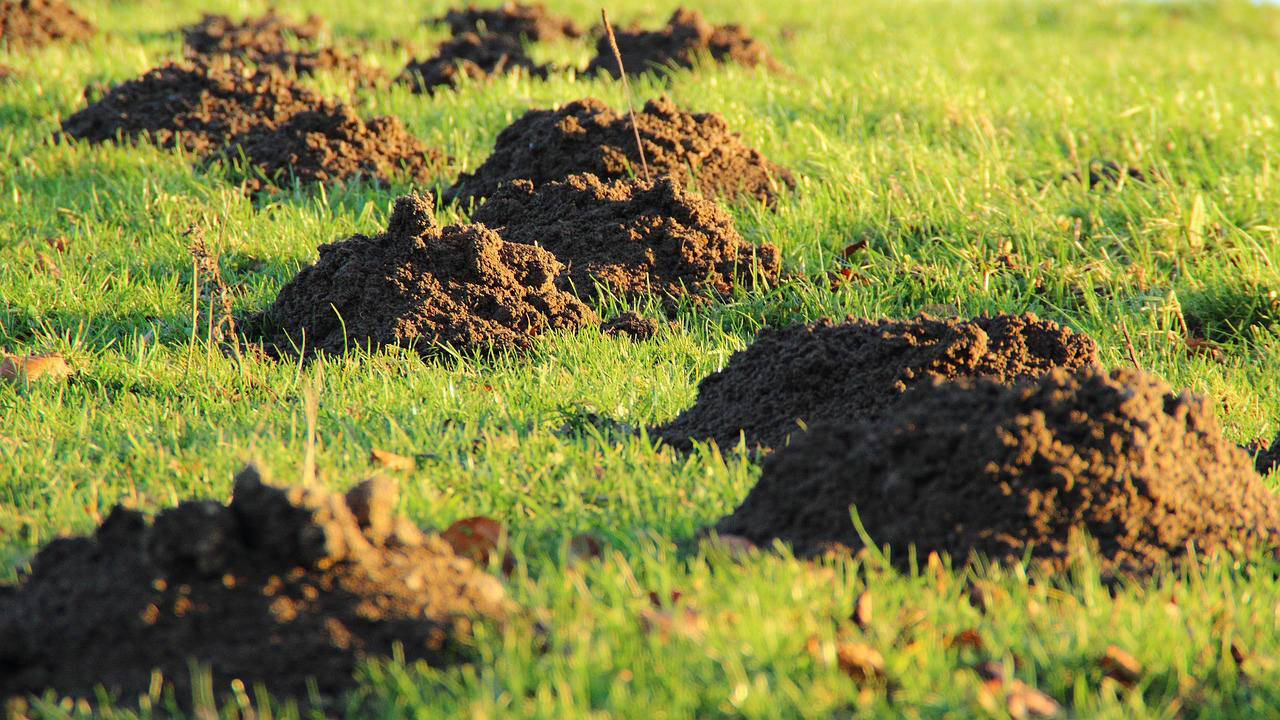
How to Get Rid of Moles in Your Yard and Keep Them Away
December 5, 2024Moles might seem harmless at first glance, but their presence in your yard can quickly turn into a frustrating infestation. These small creatures are proficient diggers, creating intricate tunnel systems that can wreak havoc on lawns and gardens and completely wreck your carefully cultivated property. You may be asking yourself, “What are moles?” and “Why are they a concern?” At Dominion, we have the answers to these questions and more. Read on to learn how to get rid of moles in your yard — and more importantly, how to keep moles out of your yard.
Types of Moles Found in Central Pennsylvania
Moles are small insectivorous mammals that dwell entirely underground. They are expert diggers that consume insects, grubs, and earthworms for sustenance. In Central Pennsylvania, you are likely to encounter three main types of moles:
Eastern Mole (Scalopus aquaticus)
Description: The Eastern Mole is the most common species in Pennsylvania, and the type of mole you are most likely to encounter in our area. It has a robust body with large forefeet adapted for digging and velvety fur ranging from gray to silver.
Habitat: Eastern Moles prefer loose, moist soils where they can easily dig tunnels. They are commonly found in lawns, gardens, fields, and woods.
Star-Nosed Mole (Condylura cristata)
Description: Easily recognizable by its distinctive star-shaped nose, this mole has a sleek, blackish-brown body and is slightly smaller than the Eastern Mole.
Habitat: Typically found in wet areas such as marshes, swamps, and along the edges of streams and ponds, Star-Nosed Moles are excellent swimmers and can even forage underwater.
Hairy-Tailed Mole (Parascalops breweri)
Description: The Hairy-Tailed Mole has dark grey fur with lighter underparts, a pointed nose, and a short, hairy tail.
Habitat: Found in forested and open areas with dry, loose soils, this mole is another proficient digger, creating extensive tunnel systems.
Why a Mole Infestation is Bad
While moles can benefit your yard by aerating the soil and controlling insect populations, a widescale infestation can lead to several problems — most notably, extensive damage to your lawn and garden. Moles often travel underground by means of surface tunnels, which areshallow tunnels just below the surface that disrupt your lawn soil, leading to uneven, bumpy ground. This can make mowing difficult and create tripping hazards.
Moles also create molehills, which are mounds of soil pushed to the surface that can smother grass and plants, creating unsightly patches in your lawn or garden.
Mole tunneling can disturb the roots of grass, flowers, and other plants, causing them to wilt, become stressed, or die, leading to soil erosion, destabilizing the ground. Mole tunnels can also undermine walkways, patios, and the foundations of buildings, causing cracking, sinking, or other structural issue. They can even disrupt underground irrigation lines or drainage systems, causing water leaks.
The presence of ridges, tunnels, and molehills can severely damage and even ruin the appearance of your property while attracting other pests. For example, insects and voles can use the mole tunnels to access plant roots and bulbs, causing additional damage.
Addressing the damage caused by moles can be time-consuming and costly, requiring ground leveling, reseeding grass, and replacing damaged plants or infrastructure.
How to Identify When You Have Moles
Identifying a mole infestation early can help you take necessary actions before extensive damage occurs. Here are some telltale signs:
Raised Ridges and Tunnels
Surface Tunnels: Moles create shallow, raised tunnels just beneath the surface, creating a ridged effect often seen running across lawns.
Appearance: The ridges are usually visible and feel soft or spongy when walked on.
Molehills
Mounds of Soil: Moles push up soil to the surface as they dig deeper tunnels, creating conical mounds called molehills.
Size and Shape: Molehills are typically about 6-8 inches in diameter and vary in height. The soil is usually fine and appears as a pile of loose dirt.
Damaged Grass
Browning or Dying Grass: Raised tunnels can disrupt root systems, leading to areas of dying or browning grass.
Pattern: Damage often appears in irregular patterns following the network of tunnels.
Soft Spots in the Lawn
Uneven Ground: Walking on your lawn, you may notice soft or sinking areas where the ground gives way more than usual, indicating tunnels below.
How to Get Rid of Ground Moles
Controlling and preventing moles from infesting your yard, knowing how to get rid of moles in your garden, or even trying to understand how to kill moles, can be a frustrating challenge. But several effective methods can help reduce or eliminate their presence:
Trapping
Types of Traps: The most effective traps are harpoon, scissor-jaw, and choker loop traps.
Placement: Place traps in active tunnels. To find active tunnels, compress a small section of the tunnel and check it after a day or two. If the tunnel is re-raised, it is active.
Timing: Set traps during the early morning or late evening when moles are most active.
Baiting
Mole Baits: Poison baits that mimic earthworms or grubs are available. Follow the manufacturer’s instructions carefully when using these products.
Safety: Keep bait away from children, pets, and non-target wildlife.
Repellents
Chemical Repellents: Castor oil-based repellents can deter moles. These can be applied in granular or liquid form.
Application: Apply repellents uniformly over the affected area and water them into the soil to increase effectiveness.
Natural Repellents: Planting certain plants, such as marigolds, daffodils, and alliums, may help repel moles.
Physical Barriers
Underground Fencing: Install a barrier of hardware cloth or metal mesh around gardens or specific areas. Bury it 24-30 inches deep and bend the bottom portion outward to prevent moles from burrowing underneath.
Raised Beds: Use raised garden beds with a wire mesh bottom to prevent moles from entering from below.
Soil Management
Reduce Food Sources: Moles feed on grubs, insects, and earthworms. Applying grub control products can help reduce mole food sources.
Soil Compaction: Compacting the soil can make it less attractive to moles. However, this method may not be suitable for all types of lawns and gardens.

Preventing Future Infestations: How To Keep Moles Away
Keeping your lawn well-mowed will reduce cover for moles, and regularly aerating your lawn will improve drainage and discourage mole activity. If moles are suspected, you should inspect your lawn and garden for signs of mole activity and follow the tips above on how to get rid of moles in your yard, fast. Early detection can help prevent extensive damage.
While moles play an important role in the ecosystem by aerating the soil and controlling insect populations, their presence in residential lawns and gardens can cause significant problems. By identifying the signs of a mole infestation early and employing effective control methods, you can keep moles away from your property. But if your mole problem has become a major infestation, it may be time to call an experienced exterminator.
Professional Mole Extermination
If you’ve tried various strategies without success or if your mole infestation is widespread or persistent, consider hiring a professional pest control service like Dominion. We know how to get rid of gophers and moles, and we have the knowledge, experience, and specialized tools to safely and effectively eliminate moles and other pests from your property.
We Get Rid of Moles Naturally
At Dominion Pest Control, we specialize in lawn pest control. Our team of professional exterminators will conduct a thorough inspection to identify the extent of the infestation and determine the best course of action. We have developed a very effective wildlife repelling service that makes use of safe, natural products that we use to rid your yard of moles for good. Using all-natural products proven to discourage nuisance wildlife, Dominion can help to keep these critters on the move. These products are entirely non-toxic and completely safe when used according to the label. Through our use of targeted treatments and natural preventative measures, we can help you ensure that your yard and garden remain mole-free.
Get In Touch
At Dominion Pest Control, our dedicated team is committed to providing exceptional service and ensuring your home or business is free from pests. We encourage you to get in touch with us if you have any questions or need further assistance. You can contact us here to learn more about how we can help you achieve a pest-free environment.
We serve Lancaster County (Lititz, Lancaster city, Manheim, Ephrata, Strasburg, etc), York County (Dallastown, Red Lion, York city, Hellam, etc), Lebanon, and Hershey. Here’s a map of our location and service area:
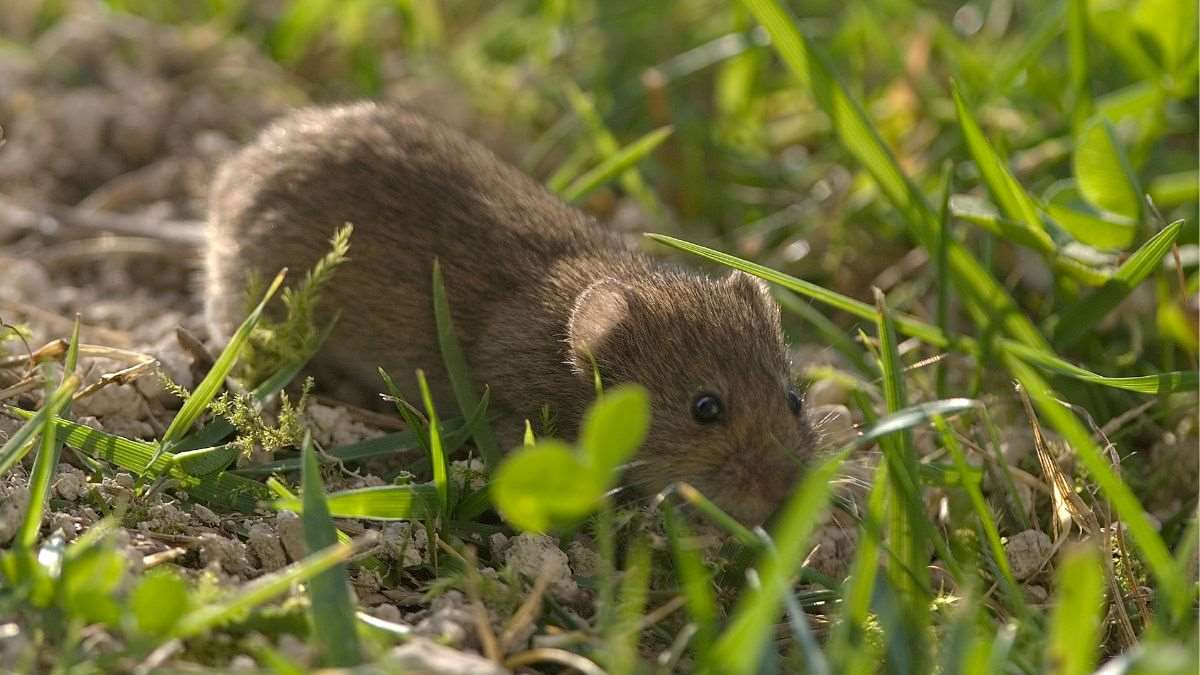
Voles: What They Are, and How to Be Rid of Them
October 2, 2024If you’ve noticed small tunnels crisscrossing your lawn or garden, you could be dealing with voles. Voles might seem like harmless, tiny rodents, but for homeowners, gardeners, and farmers, they can cause significant damage to lawns, gardens, and crops.
These tiny rodents can cause major headaches for property managers, especially when they start chewing through plants and roots. Understanding what voles are, the types found in Central Pennsylvania, and effective strategies to get rid of voles, is essential for maintaining a healthy and beautiful landscape.

Grain Weevil Treatment and Tips: Protecting Your Home
February 22, 2024Grain weevils might be tiny in size, but the havoc they can wreak upon your home is anything but small. These pesky pests are a common nuisance for homeowners — especially in regions with a bustling grain culture, like Lancaster and York County. If you’ve discovered these unwelcome guests in your pantry, read on to learn some effective grain weevil treatment methods.

How to Get Rid of Grain Beetles
February 13, 2024Are you tired of finding grain beetles crawling around in your pantry or flying around in your kitchen? Also referred to as “grain bugs,” these tiny reddish-brown pests are a common nuisance for many homeowners — but luckily, there are ways to get rid of them. In this guide, we’ll discuss the best methods for eliminating grain beetles and keeping your home pest-free.

Drain Flies (Sewer Flies): Everything You Need to Know
December 18, 2023A common nuisance, drain flies are small, pesky insects that can be found year-round due to ideal living conditions in our homes. In this post, we’ll cover everything you need to know about drain flies, commonly called sewer flies — including what they look like, if they’re harmful, and most importantly, how to get rid of them.

Winter Bugs and Other Pests: Where Do They Go and How Do They Survive?
November 21, 2023As we enter the winter months and anticipate the holiday season, there are many things to look forward to: cozy nights by the fire, holiday decorations, warm sweaters…but pests aren’t on the list. For residents of Lancaster and York counties, winter bugs like ground beetles, stink bugs, ladybugs, boxelder beetles, and grain beetles can become a major nuisance in the winter. Other common winter pests in Central PA include mice, centipedes, silverfish, cockroaches, and spiders.
But how do these bugs and other pests survive the cold — and where do they go? Let’s take a look at some of the most common winter pests in Central PA and how they manage to make it through the season.

Stink Bug Control: Debunking Myths and Revealing Effective Strategies
May 22, 2023Are you tired of dealing with those pesky stink bugs invading your home? Well, you’re not alone! Many homeowners, just like you, are seeking effective strategies for stink bug control, to eliminate these nuisance insects.
For effective stink bug control, it’s important to understand the myths surrounding them. In this post we debunk a few common myths surrounding stink bugs and concentrate on providing you with accurate information to tackle these pesky invaders. So, let’s separate fact from fiction and arm you with the knowledge you need to keep stink bugs at bay.

